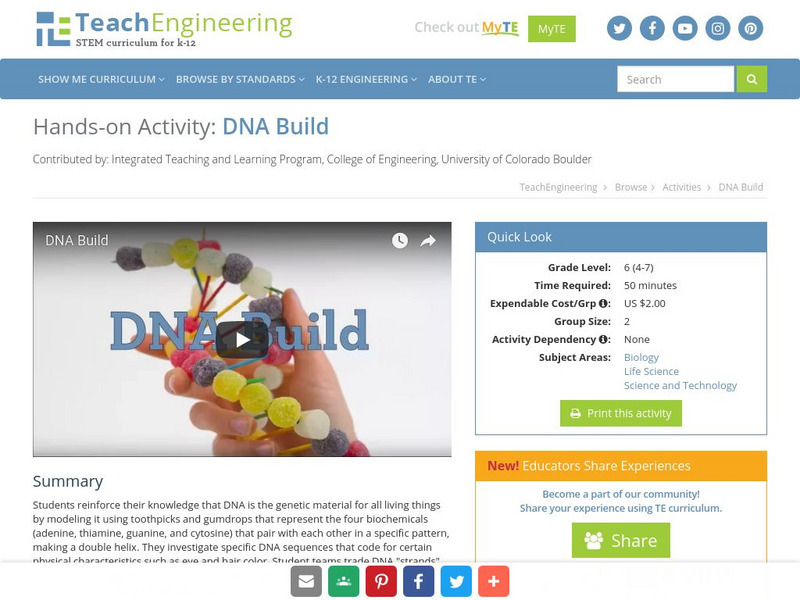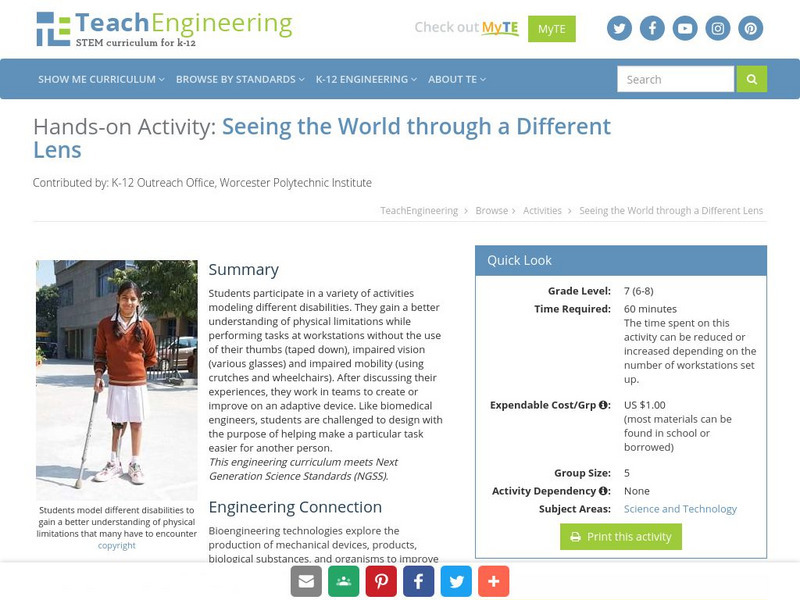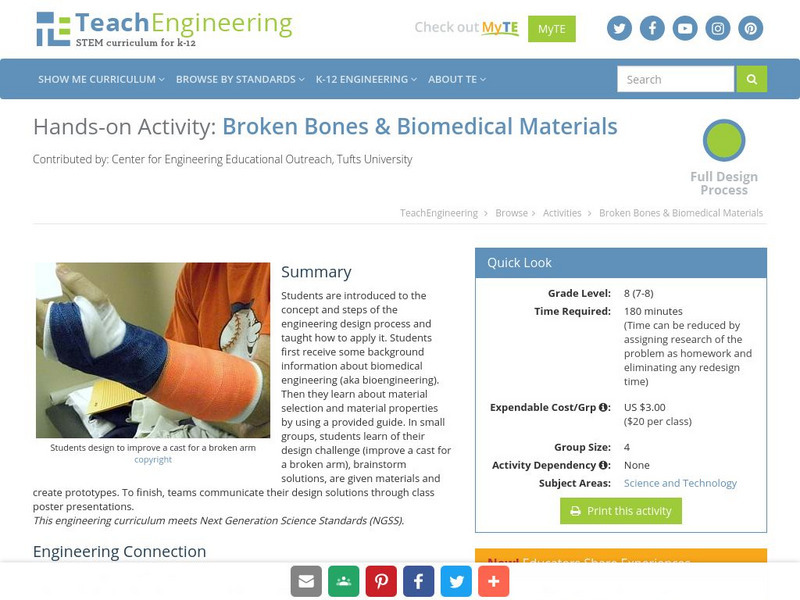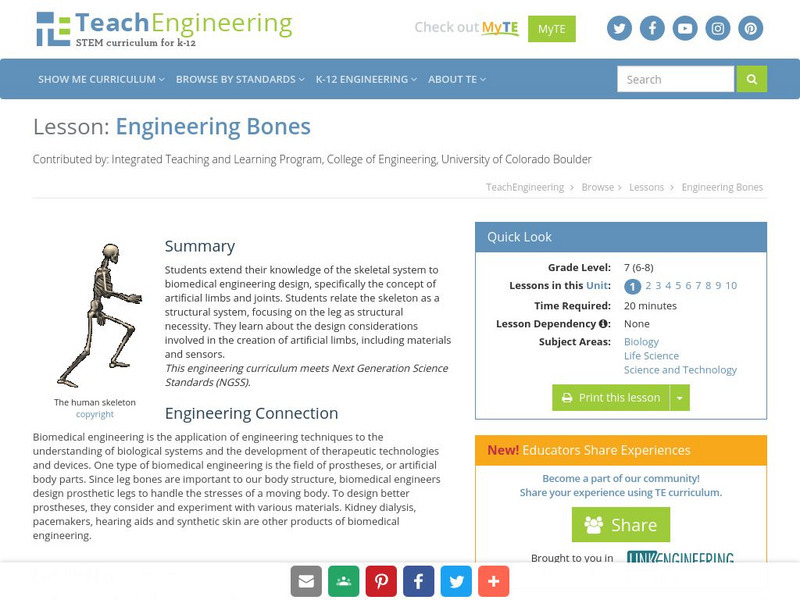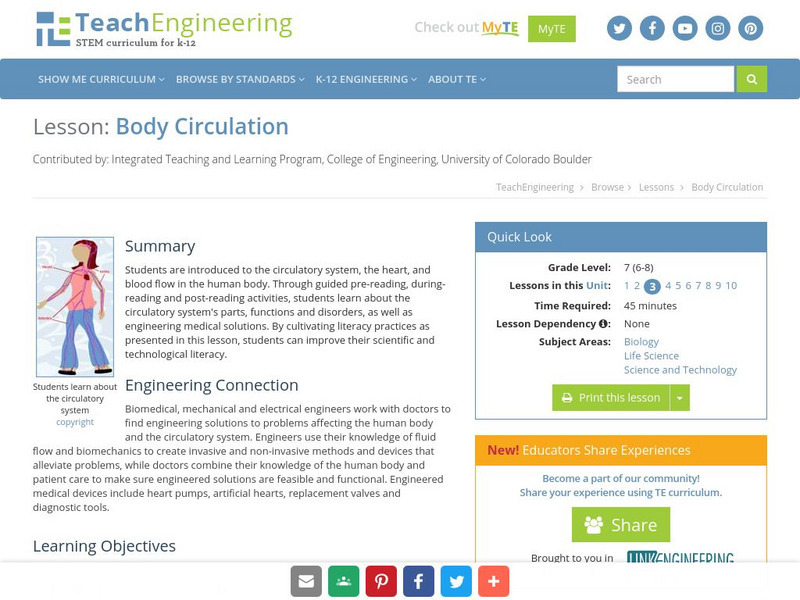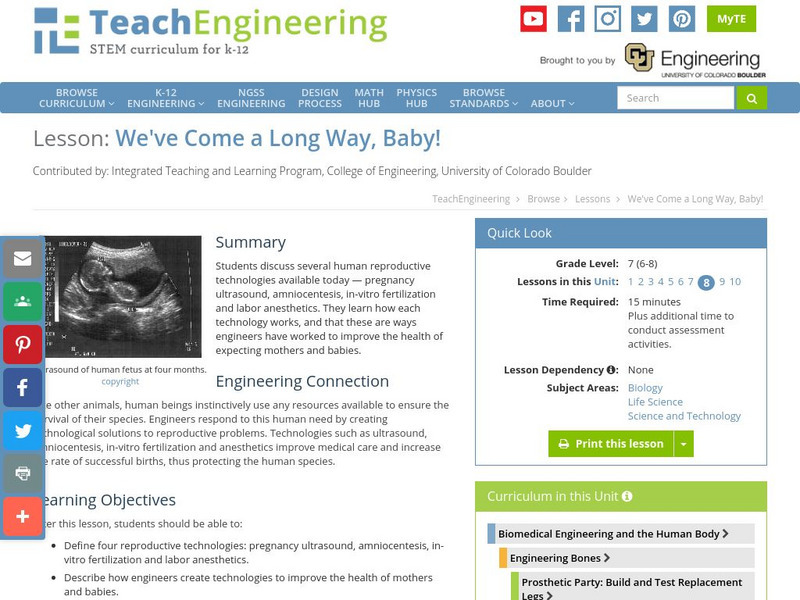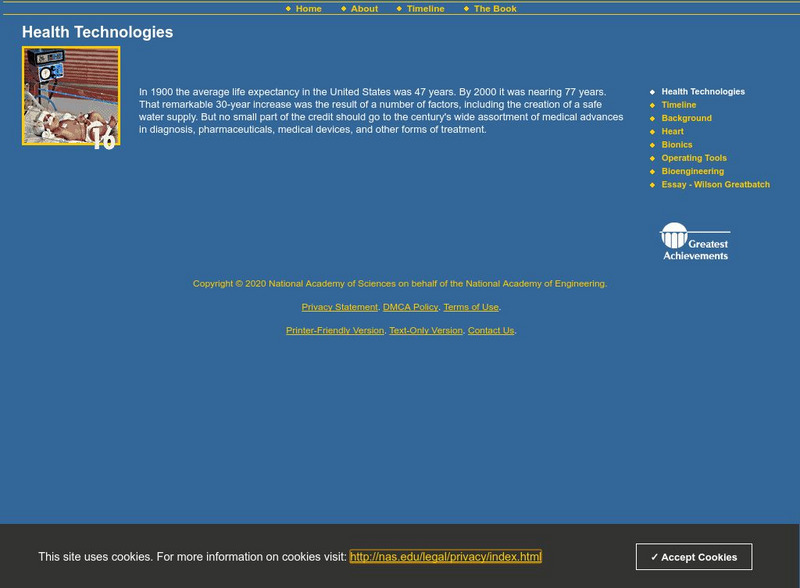TeachEngineering
Teach Engineering: Polluted Air = Polluted Lungs
To gain a better understanding of the roles and functions of components of the human respiratory system and our need for clean air, students construct model lungs that include a diaphragm and chest cavity. They see how air moving in and...
TeachEngineering
Teach Engineering: Protect That Pill
Students reinforce their knowledge of the different parts of the digestive system and explore the concept of simulation by developing a pill coating that can withstand the churning actions and acidic environment found in the stomach....
TeachEngineering
Teach Engineering: Protect Those Eyes
Students design and build prototypes for protective eyewear. They choose different activities or sports that require protective eyewear and design a device for that particular use. Students learn about the many ways in which the eyes can...
TeachEngineering
Teach Engineering: You're the Expert
Student teams learn about and devise technical presentations on four reproductive technology topics pregnancy ultrasound, amniocentesis, in-vitro fertilization or labor anesthetics. Each team acts as a panel of engineers asked to make a...
TeachEngineering
Teach Engineering: Dna Build
Students reinforce their knowledge that DNA is the genetic material for all living things by modeling it using toothpicks and gumdrops that represent the four biochemicals (adenine, thiamine, guanine, and cytosine) that pair with each...
TeachEngineering
Teach Engineering: Seeing the World Through a Different Lens
Students will participate in a variety of activities modeling different disabilities. After discussing their experiences, students work in teams to devise or improve on an adaptive device.
TeachEngineering
Teach Engineering: Seeing the World Through a Different Lens
Students will participate in a variety of activities modeling different disabilities. After discussing their experiences, students work in teams to devise or improve on an adaptive device.
TeachEngineering
Teach Engineering: Broken Bones
The purpose of this activity is to introduce students to the concept of the engineering design process and to teach them how to apply it. In "Broken Bones," students will explore the steps of the engineering design process. They will...
TeachEngineering
Teach Engineering: Biomedical Engineering and the Human Body
Human beings are fascinating and complex living organisms-a symphony of different functional systems working in concert. Through a 10-lesson series with hands-on activities students are introduced to seven systems of the human...
TeachEngineering
Teach Engineering: Cells
In this unit, students look at the components of cells and their functions and discover the controversy behind stem cell research. The first lesson focuses on the difference between prokaryotic and eukaryotic cells. In the second lesson,...
TeachEngineering
Teach Engineering: Engineering Bones
Middle schoolers extend their knowledge of the skeletal system to biomedical engineering design, specifically the concept of artificial limbs. Students relate the skeleton as a structural system, focusing on the leg as structural...
TeachEngineering
Teach Engineering: Body Circulation
Learners are introduced to the circulatory system, the heart, and blood flow in the human body. Through guided pre-reading, during-reading and post-reading activities, students learn about the circulatory system's parts, functions and...
TeachEngineering
Teach Engineering: Breathe In, Breathe Out
Learners are introduced to the respiratory system, the lungs and air. They learn about how the lungs and diaphragm work, how air pollution affects lungs and respiratory functions, some widespread respiratory problems, and how engineers...
TeachEngineering
Teach Engineering: Digestion Simulation
To reinforce middle schoolers' understanding of the human digestion process, the functions of several stomach and small intestine fluids are analyzed, and the concept of simulation is introduced through a short, introductory...
TeachEngineering
Teach Engineering: My Mechanical Ear Can Hear!
Students are introduced to various types of hearing impairments and the types of biomedical devices that engineers have designed to aid people with this physical disability.
TeachEngineering
Teach Engineering: We've Come a Long Way, Baby!
Students discuss several human reproductive technologies available today--pregnancy ultrasound, amniocentesis, in-vitro fertilization and labor anesthetics. They learn how each technology works, and that these are ways engineers have...
TeachEngineering
Teach Engineering: The Cloning of Cells
Middle schoolers continue their education on cells in the human body. They discuss stem cells and how engineers are involved in the research of stem cell behavior. They learn about possible applications of stem cell research and...
TeachEngineering
Teach Engineering: Who's Hitchhiking in Your Food?
How can you tell if harmful bacteria are growing in your food? Students learn to culture bacteria in order to examine ground meat and bagged salad samples, looking for common foodborne bacteria such as E. coli or salmonella. After 2-7...
Other
Mit Technology Review
Technology Review is a magazine by MIT which seeks to "promote the understanding of emerging technologies and their impact on business and society." It provides you with daily technology information including events, discussions, and...
Massachusetts Institute of Technology
Mit: Open Course Ware: Introduction to Bioengineering
College-level biotechnology course highlighting a science basis for bioengineering focusing on molecular cell biology and systems biology. Course contents include video lectures and interviews of bioengineering faculty, lecture notes,...
National Academy of Engineering
Greatest Engineering Achievements of the 20th Century: Health Technologies
Learners investigate health technologies in the 20th century. Some topics examined are the heart, bionics, and bioengineering. The resource consists of historical information, a timeline, and a personal essay by a key innovator.
Cosmo Learning
Cosmo Learning: Introduction to Bioengineering
A collection of video lectures from a course introducing students to the bioengineering field. Webpage includes sixteen videos from professors at Massachusetts Institute of Technology. Lectures vary in length and include an introduction...
PBS
Pbs: Scientific American: Coordinated Control Exercise
PBS's Scientific American series sponsors this learning exercise designed to simulate functional electrical stimulation (FES), a technology which allows the recovery of control of paralyzed muscles.
PBS
Pbs: Scientific American: Uncovering a Signal
An activity in which students analyze simulated brain signals and attempt to determine which signals control which muscle activity, imitating the manner in which a computer attempts to decipher brain signals for use in bionics.






